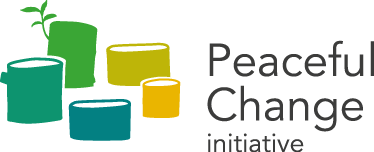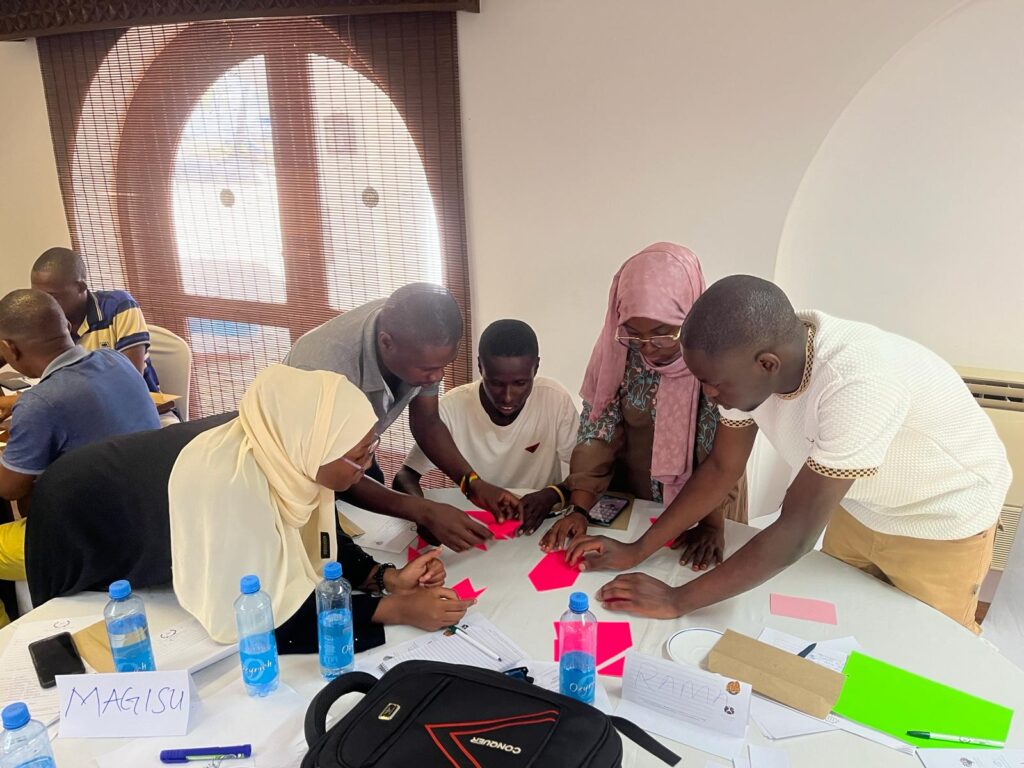About the CSDD tool
Some years ago, PCi staff facilitated a conflict sensitivity workshop for government donors providing assistance in Syria. One of the donor participants lamented that the conflict sensitivity tools were telling him that providing humanitarian assistance to besieged areas was likely to do harm by enabling the Syrian Government to focus its resources towards the war and normalising siege tactics. At the same time, not providing the assistance was also likely to do harm as there were indications that the Syrian Government would lift the siege or provide assistance to its own citizens. Traditional conflict sensitivity tools were not able to provide answers to this dilemma. As a result the donor participant experienced decision-paralysis. From PCi’s side, we decided to invest time in developing a new tool that would help with decision-making – the Conflict Sensitive Due-Diligence tool (CSDD).
Across the H-D-P Nexus, policy-makers, programme designers and project staff within donor and implementing agencies need a conflict sensitivity tool that can:
- Help them think through the balance between positive impacts and harms of the assistance that they are providing. In some situations no course of action, including inaction, is completely harm-free. It is necessary to think through the trade-offs between potential harms and potential benefits of the activity. The CSDD tool guides users through considering this balance.
- Answer strategic-level questions about whether this type of assistance is appropriate. It is relatively easy to conflict-sensitise a particular project, but less easy to understand whether that particular project is a conflict sensitive thing to be working on in this context at this time. The CSDD tool can be applied equally to policy-level and activity-level decisions.
- Provide clear and definitive answers based on available information. Peace and conflict dynamics are complex and often, the more one learns about them, the more questions are raised. This open-endedness means that it is unclear when you have sufficient information to satisfactorily make decisions. The CSDD tool’s “due diligence approach allows you to make decisions based on the information you have available.
- Help make quick decisions about how to implement an ongoing project. Often conflict sensitivity is something that is dealt with as a specific exercise at the project design phase. But, project implementation is the sum-total of hundreds of small decisions – all of which also need to be conflict sensitive. The CSDD tool can be written up formally or function as a mental check list when you are planning a project activity – this helps to integrate conflict sensitivity into a wider range of moments in the project cycle.
Conflict sensitivity tools typically focus on the impacts of activities (most often negative impacts) and not specifically on whether decision makers have acted appropriately. However, it is likely that any activity will always risk some harm, some of which cannot be foreseen. In these circumstances, conflict sensitivity can come across as a damned-if-you-do-damned-if-you-don’t situation. This is unsatisfactory for decision makers.
The Peaceful Change initiative, therefore, advocates for a “Due-Diligence” approach to conflict sensitivity. To this end we developed the Conflict Sensitive Decision-Making (CSDD) tool. The CSDD tool consists of four questions, or tests, which should be asked when undertaking any decision about assistance. If the decision passes each of these tests, then that decision could be considered to be suitably conflict sensitive. Conflict sensitivity harms may still occur as a result of the decision, or new opportunities to contribute to peace emerge. the decision maker has the responsibility to respond to these appropriately but in the meantime can act in the confidence that they have done their due diligence.
The four conflict sensitivity tests
Test 1: The objectives test – Are the objectives of the activity relevant, timely and appropriate within the peace and conflict environment?
The first test seeks to assess whether the intention of the action is relevant, timely and appropriate to the peace and conflict context. Decision-makers should consider whether the assistance responds to a genuine need in this moment. Assistance activities that may have responded to a genuine need at the start of a project may become less relevant due to a shift in peace and conflict dynamics. Asking and answering these questions can be challenging, especially when contracts, delivery targets and workplans, and institutional pressures push against it. However, activities that are not relevant, timely or appropriate risk, at best, wasting resources that could be used for other assistance activities and, worse, exacerbating conflict dynamics.
Test 2: Harm-minimisation test – Have all reasonable efforts been undertaken to identify and mitigate potential harms that may be caused by the activity?
The second test asks whether the decision maker has tried to identify potential conflict sensitivity harms that may be caused by the activity and has adapted the activity to mitigate those (and planned appropriate responses should they occur anyway). Conflict analysis is necessary to understand the context and to identify potential interactions between the activity and the context and various adaptations can be made depending on the sorts of interactions identified.
Test 3: The benefit-maximisation test – Have all reasonable efforts been undertaken to identify and leverage opportunities to contribute to peace through the activity?
The third test is the mirror of the second test, looking at ways in which the activity could contribute to peace. While leveraging opportunities for peace is an explicit part of existing conflict sensitivity frameworks, it is often given less attention than the conflict sensitivity harms. By including positive contributions as an explicit test, it ensures that decision makers do not ignore or deprioritise it. As with the second test, this test uses familiar tools within existing conflict sensitivity approaches.
Test 4: Proportionality test
The final test tries to find the balance between potential harms identified in test 2 with the benefits of the activity identified in tests 1 and 3. The recognition inherent in this test is that activities may cause harms no matter what mitigations are put in place. There may also be no alternative course of action that could be harm free. However, this test asserts in such circumstances, activities may still be conflict sensitive so long as those harms are proportional to the benefits.
Implementation of the test requires a sense of how to balance benefits and harms. In practice, different institutions or decision makers may develop their own sense of where the balance lies relevant to their own activities. The point of the test is, ultimately, that you think about the balance of harms and benefits explicitly and that you can justify, to yourself or on record, as to why a decision may be made.
Using the CSDD in practice
Practically, the amount of effort expected for each of these different levels should be proportionate. You can use the four tests to help inform the conflict sensitivity of organising a meeting by spending 30 minutes thinking through them. For a multi-million pound project, we would expect that a much more in-depth assessment take place. Fundamentally, though, the process is the same. Work through each test. If you can answer yes to each one, then the project passes and can reasonably be seen to be conflict sensitive.
What happens if you cannot pass the test
There are times where the conclusion of the CSDD tool is that a project’s benefits do not outweigh the potential harms. In practice, however, some implementers and even donors may dispute such concerns. By using the CSDD tool, particularly when responses to each test are written down in a report or note, you have the opportunity to engage with key stakeholders and discuss the conflict sensitivity considerations raised. It requires these stakeholders to respond to your concerns, to take them seriously and either explicitly declare that they disagree or, more likely, to make adaptations to activities in order to try to address concerns.
The CSDD tool is not intended as a replacement for existing conflict sensitivity frameworks. It is intended to augment them, by making decision-making easier.
For more information about the CSDD Tool:
- Listen to the Peaceful Change Podcast episode on Conflict Sensitive Due Diligence
- View the Conflict Sensitive Due Diligence Guidance Note
- Contact the Peaceful Change initiative



